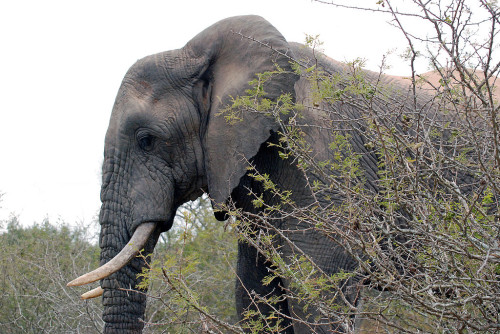
I spent a very interesting day in February at a meeting convened by Transparency International, WWF and DICE (Durrell Institute of Conservation and Ecology at the University of Kent) to consider corruption and its impact upon conservation.
As my regular readers will know, invitations to workshops, seminars and conferences invariably prompt me to reflect on current responses to whatever specific or general subject is under discussion. So…
Although, both as a Police officer and in my enforcement role with the Convention on International Trade in Endangered Species of Wild Fauna and Flora (CITES), I investigated or examined instances of corruption, I would not claim any specific expertise in this field. However, I was very used, especially as a Detective, to trying to think out of the box and to look for ways in which criminals could be brought to justice, albeit they might not end up in the dock charged with what, at first sight, might have appeared to be their primary criminal behaviour.
That’s why I regularly encouraged law enforcers to consider tax, duty and currency control evasion, conspiracy, racketeering, and a whole range of other criminal law provisions, to bring the bad guys (and occasionally gals) to book, rather than focusing purely on wildlife legislation. This is particularly important if we are to tackle organized crime groups and networks.
It was just such approaches which came to mind when I listened to the discussions on conservation-related corruption. It struck me, as it has before, that we are maybe looking in the wrong direction.
In my experience, most of the conversations about corruption appear to concentrate upon those who behave ‘corruptly’: the Customs officer who accepts a bribe to clear a container for export which contains tonnes of elephant ivory; the Game Scout who takes a ‘bung’ to tip off a poaching group on the location of a rhino with large horns; or the prosecutor who marks a case ‘insufficient evidence’ because of a payment received.
Yes, these individuals are all worthy of condemnation. And, yes, there are undoubtedly instances when such officials will actively seek out opportunities to feloniously increase their income. But it takes two to tango. What are we doing about the corrupters?
In each of the above examples, someone has either initially reached out to those individuals or has been willing to respond to their request for an illicit payment. What are we doing about those people?
Setting aside any considerations over getting the balance right, I am convinced that this is yet one more opportunity which we may be failing to exploit; to bring the ‘real’ criminals to justice.
The anti-corruption and bribery legislation in most countries usually carries significant penalties, regularly substantially more than those available in wildlife laws. Importantly, it also invariably empowers the authorities to employ a full range of investigatory techniques, such as accessing bank account and other financial transaction details, human and electronic surveillance, ‘sting’ operations, witness protection provisions, etc. The powers and tools that are seldom, if ever, incorporated into wildlife-related law.
You may not be able to prove that John Sellar paid, equipped and controlled several rhino poaching gangs but you might be able to demonstrate that he bribed a ranger in one of the parks where they were active.
Who deserves to be brought to justice? Against whom should our limited resources be targeted?
In a not insignificant number of countries, Customs and Police officials receive salaries that simply do not provide sufficient income to support them and their families. Anti-poaching personnel receive even smaller wages and it is not unknown for their payments to be months in arrears, along with the various allowances to which they are entitled.
Is this yet another area of combating wildlife crime and trafficking where we are perhaps picking off the small fry whilst ignoring, or paying inadequate attention to, those who are truly the guilty parties?
One increasingly hears calls these days, with regard to combating wildlife crime, to Follow-The-Money. What do those issuing such calls really mean? Do they actually know what they mean? Which money? Whose money? I suspect they are, in the main, thinking of the monies received by individuals and organized crime groups as illicit profits. But might it not be equally effective to follow-the-money that is disbursed by those criminals; in bribes and other crime-facilitating payments?
Transparency International, WWF and DICE should be applauded for coming together to examine this subject. It is equally commendable that CITES, at its recent Standing Committee, frankly addressed corruption; something which anyone connected with the Convention has known for decades to be a major impediment to effective CITES implementation, but which too many people avoided even speaking of. Similarly, this is a field where the International Consortium on Combating Wildlife Crime shows its worth and potential; since several of the partners, such as UNODC, have proven experience of assisting countries in combating corruption.
Surely it is just as important, if not more, to target the corrupters alongside those individuals, agencies, organizations, or even governments that we think of as being corrupt?
After all, corruption is not a one-way street.

![The UN’s Lone Ranger: Combating International Wildlife Crime [Podcast]](https://annamiticus.com/wp-content/uploads/2015/10/BehindTheSchemesEpisode37-500px-150x150.png)


